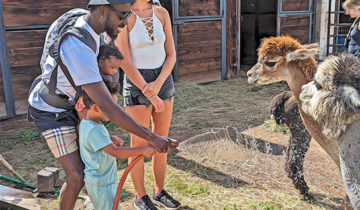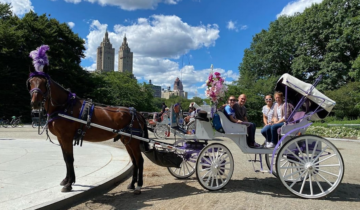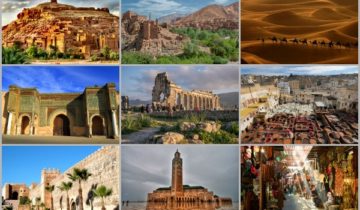Attractions and things to do in Rome, Italy today: Must see: Pantheon – One of the best maintained buildings from Roman times is the Pantheon. What function the building had in those days is still not clear, but the Pantheon was given to the pope by emperor Hadrian in 608. The current church has several unique funerary monuments (painter Raphael and a few Italian kings), as well as a remarkably large and open dome (oculus). Since a while you need to buy tickets to visit the Roman Pantheon. The Piazza del Popolo is a large neo-classical square from the 19th century, originally intended to welcome visitors who entered the city from the north. Noteworthy sights on the square are the two identical churches built across from each other, the city gate ‘Porta del Popolo’, an enormous Egyptian obelisk and the steps that let you climb Pincio Hill for a wonderful view. Read more info at things to do in Rome.
Strategically set 50 meters above the Tiber, the Palatine Hill shows evidence of Rome’s earliest settlement: rock-cuttings found in front of the Temple of Cybele show human activity as long ago as the ninth century BC. Later, this was the site chosen by the emperors and great aristocratic families for their palaces. The Farnese Gardens were laid out on the hill in the 16th century for Cardinal Alessandro Farnese, a pleasure park of terraces, pavilions, lawns, flowerbeds, trees, and fountains designed as a kind of stage-setting for social gatherings. Highlights of the Palatine Hill are the House of Livia (Augustus’ wife), the semi-subterranean Cryptoporticus, Domus Flavia, Domus Augustana, and most imposing of all, the Baths of Septimius Severus. The Palatine Hill is a lovely place to explore, combining a park with magnificent and impressive ruins of ancient Rome.
Free things to do in Rome : Visit the Art at Galleria Nazionale Di San Luca , Located at the Piazza dell’Accademia di San Luca, this art gallery is open Monday, Wednesday, Friday. and the last Sunday of the month from 10 a.m. to 2 p.m. The Accademia di San Luca was founded in 1577 as an association of artists in Rome, with the purpose of elevating the work of artists in the eyes of the community. At the museum, you can enjoy selected works of Raffaello, Canova, and Van Dyck among other famous names.
This stunning Baroque masterpiece is another unmissable stop in the Italian capital city. A ten-minute walk from the Spanish Steps, the Trevi Fountain as it stands today was completed in 1762, though it is said that the water source dates back to 19BC. You can see the fountain as part of this Free Walking Tour of Rome, during which you can take the chance to follow the tradition of throwing a coin into the water. According to legend, this act will ensure one’s return to the city! Piazza Navona is a must on this list of places to see in Rome. It’s considered one of the most beautiful squares in the capital of Italy—and the world! Full of bars and restaurants, this area is perfect for a break between monuments. See even more details on https://lvtsk.com/.
Talking about pizza… if you’re a foodie, we’d definitely recommend taking a look at taking a cooking class or two while you’re in the home of Italian cuisine. On this Italian Pizza Workshop in Rome, you’ll learn from a highly-skilled pizzaiolo about the high-quality ingredients and essential techniques necessary for constructing this beloved dish, taking you on a culinary and cultural adventure like no other! If pasta is more your speed, you might prefer this Italian Pasta & Tiramisu Workshop, during which you’ll learn to make your very own fresh pasta and sauce, as well as the irresistible coffee dessert of tiramisu! If you’re on your holiday to relax, and simply want to indulge in the infinite delights that Italian cuisine has to offer, go on this Trastevere Food Tour and explore one of Rome’s best areas for food and wine!
Baths of Caracalla – The Baths of Caracalla, the second largest public baths in Rome, were built by Emperor Caracalla in the third century for political propaganda purposes: The emperor simply wanted people to like him. The baths were functional for over three hundred years. Negligence, looting and an earthquake turned the complex into ruins but their sheer size and ingenuity continues to impress visitors.
Piazza Venezia , Located at the heart of Rome, Piazza Venezia is a large hub and thoroughfare built during the 19th and 20th centuries, along with the enormous Altare della Patria or Monument, dedicated to honor Vittorio Emanuele II, who was the first king to serve under a unified Italy in 1861 and known as the “Father of the Fatherland”. Via del Corso and Via dei Fori Imperiali are two important streets that intersect in Piazza Venezia.



